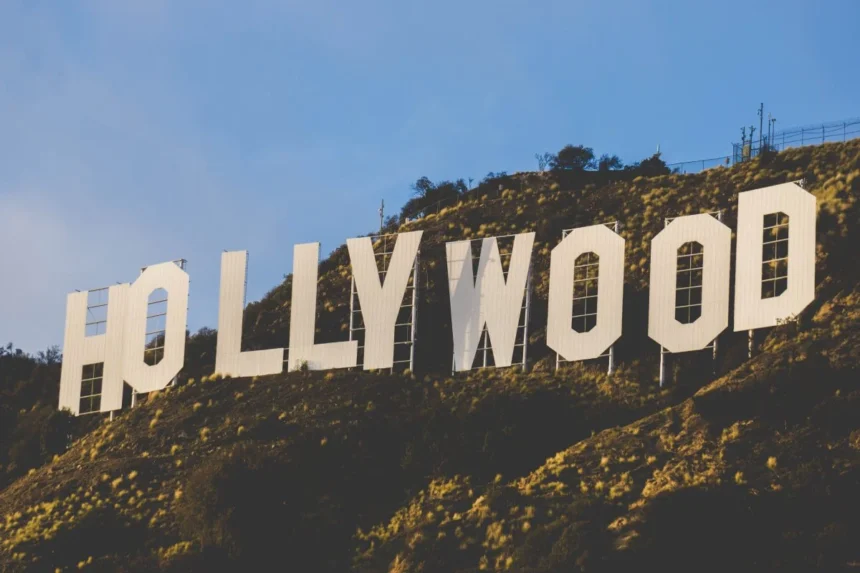Introduction
Hollywood, the iconic neighborhood located in Los Angeles, California, is synonymous with the American entertainment industry. Renowned for its glitz, glamour, and global influence, Hollywood has served as the epicenter of the film, television, and music industries for over a century. From the golden age of cinema to the digital revolution of the 21st century, Hollywood has continuously evolved and adapted to shape the cultural landscape of America and the world. In this article, we’ll explore the rich history, enduring legacy, and contemporary significance of Hollywood within the American entertainment industry.
The Birth of Hollywood
The origins of Hollywood as a major entertainment hub can be traced back to the late 19th century when early filmmakers, seeking an escape from Thomas Edison’s strict patent enforcement in New Jersey, migrated to the West Coast in search of favorable weather and diverse filming locations. The mild climate, varied landscapes, and proximity to both urban and rural settings made Southern California an ideal location for film production.
In 1911, film director D.W. Griffith established the first movie studio in Hollywood, marking the beginning of the area’s transformation into a thriving film production center. The establishment of major studios such as Paramount Pictures, Warner Bros., Universal Pictures, and 20th Century Fox solidified Hollywood’s reputation as the entertainment capital of the world.
The Golden Age of Cinema
The 1920s and 1930s are often referred to as the golden age of cinema, a period marked by unprecedented growth and innovation in the film industry. Hollywood’s major studios churned out a steady stream of classic films, establishing the star system and iconic genres such as the musical, the western, and the screwball comedy.
During this era, Hollywood became synonymous with glamour and sophistication, with movie stars like Charlie Chaplin, Marilyn Monroe, Humphrey Bogart, and Audrey Hepburn captivating audiences around the globe. The Hollywood studio system, characterized by vertical integration and long-term contracts with actors, directors, and crew members, exerted tight control over the production, distribution, and exhibition of films, shaping the industry’s commercial and artistic landscape.
Television and the Rise of the Studio System
The advent of television in the 1950s posed a significant challenge to the dominance of Hollywood’s studio system. As audiences turned their attention to the small screen, film studios faced declining ticket sales and the threat of obsolescence. However, Hollywood adapted to the changing landscape by producing content for television and expanding its reach into new markets.
The 1960s and 1970s witnessed a shift in Hollywood’s approach to filmmaking, with the rise of independent filmmakers and a resurgence of creativity and experimentation. Directors like Martin Scorsese, Francis Ford Coppola, and Steven Spielberg ushered in a new era of American cinema with groundbreaking films such as “Taxi Driver,” “The Godfather,” and “Jaws.”
Blockbusters and Franchise Films
In the late 20th century, Hollywood embraced the concept of the blockbuster, producing high-budget films with mass appeal and wide commercial success. The release of films like “Star Wars,” “Jaws,” and “E.T. the Extra-Terrestrial” ushered in the era of the summer blockbuster, with studios banking on big-budget spectacles to draw audiences to theaters.
The rise of franchise films and cinematic universes further solidified Hollywood’s dominance in the global entertainment market. From the Marvel Cinematic Universe to the “Harry Potter” and “Star Wars” franchises, Hollywood studios capitalized on the popularity of existing intellectual properties, spawning sequels, spin-offs, and merchandise that generated billions of dollars in revenue.
Diversity and Representation
In recent years, Hollywood has faced criticism for its lack of diversity and representation both in front of and behind the camera. The #OscarsSoWhite movement and calls for greater inclusion and representation have prompted industry-wide initiatives to address systemic barriers and promote diversity in storytelling.
Films like “Black Panther,” “Crazy Rich Asians,” and “Parasite” have shattered box office records and earned critical acclaim for their diverse casts and authentic representation of marginalized communities. Hollywood’s growing recognition of the importance of diversity and representation reflects a broader cultural shift towards inclusivity and equity in the entertainment industry.
The Digital Revolution
The 21st century has seen Hollywood undergo a digital revolution, with advancements in technology transforming the way films are produced, distributed, and consumed. Digital streaming platforms like Netflix, Amazon Prime Video, and Disney+ have disrupted traditional distribution models, offering audiences unprecedented access to a vast library of content on-demand.
The rise of streaming services has fueled the proliferation of original programming, with Hollywood studios investing heavily in high-quality television series, documentaries, and films exclusive to digital platforms. The popularity of streaming has also given rise to new formats and genres, such as binge-worthy series, interactive content, and short-form videos tailored to digital audiences.
Challenges and Opportunities
Despite its continued dominance in the global entertainment market, Hollywood faces a myriad of challenges in the digital age. The rise of streaming services has fragmented audiences and disrupted traditional revenue streams, forcing studios to adapt their business models and embrace new distribution strategies.
Additionally, Hollywood grapples with issues of piracy, intellectual property theft, and content regulation in an increasingly interconnected and digital world. The proliferation of online platforms and social media has democratized content creation but has also raised concerns about privacy, misinformation, and online harassment.
Conclusion
Hollywood’s influence on the American entertainment industry is undeniable, shaping cultural trends, inspiring generations of filmmakers, and captivating audiences around the world. From its humble beginnings as a fledgling film production center to its current status as a global entertainment powerhouse, Hollywood continues to evolve and adapt to the ever-changing landscape of the digital age.
As technology advances and consumer preferences shift, Hollywood faces new challenges and opportunities in the pursuit of creative excellence and commercial success. By embracing diversity, innovation, and inclusivity, Hollywood can continue to thrive as a beacon of creativity and cultural expression, enriching the lives of audiences and shaping the future of entertainment for generations to come.







